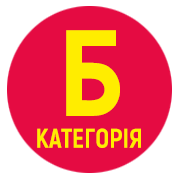ANALYSIS OF THE RELATIONSHIP OF MATCH ACTIVITY AND PHYSIOLOGICAL REACTION OF TENNIS PLAYERS IN SINGLES
DOI:
https://doi.org/10.32782/olimpspu/2024.1.12Keywords:
load, physiological indicators, tennis match, heart rate, correlation.Abstract
The tennis game is characterized by high-intensity technical and tactical actions with interval loading. It has been found that women’s tennis differs from men’s tennis in longer draws (i.e. a greater number of strokes performed during the draw), but in a lower intensity of loads during the execution of strokes, have a higher percentage of unforced errors and a lower percentage of games won on serves. It is analyzed that the physical aspects of the game affect acute physiological reactions during the execution of shots on the court, the nature of the activity of the game can affect the physiological needs of players with a higher concentration of lactate in the blood in matches with longer ball plays. The aim of the study was to assess the physiological load and individual characteristics of the game activity in junior girls involved in tennis. The study involved 8 professional tennis players, whose average age was 17.3 years. Activity analysis was performed during matches, heart rate and lactate concentration were measured during breaks. The average values of the players’ activity characteristics were: 8.2s draw duration, 17.7s rest time between draws, 21.9% effective game time, 2.7% strokes per draw, 2.3 changes of direction per draw. Heart rate and lactate concentrations during matches were 161 beats/min and 2.0 mmol/L, respectively. It was analyzed that heart rate values were higher during serving (166 beats/min) compared to the draw (156 beats/min), while lactate concentrations did not differ. Physiological responses related to match play were shown to be influenced by match characteristics (length of draw, number of strokes per draw, and changes in direction; heart rate was higher at the time of serving. The results of the study can be used to develop interval training protocols for younger players.
References
Кореляційний аналіз психофізіологічних показників борців вільного стилю як фактор успішності змагальної діяльності / А.С. Євтифієв та інші. Науковий часопис Національного педагогічного університету імені М.П. Драгоманова. Серія 15 «Науково-педагогічні проблеми фізичної культури (фізична культура і спорт)». Київ, 2023. Вип. 7 (167). С. 84–88. https://doi.org/10.31392/NPUnc.series15.2023.7(167).16.
Аналіз показників техніко-тактичних дій тенісистів 10–12 років з урахуванням властивостей темпераменту і моніторингу показників частоти серцевих скорочень / І. Євтифієва та інші. Освіта. Інноватика. Практика. Суми, 2023. Том 11. № 2. С. 19–24. https://doi.org/10.31110/2616-650X-vol11i2-003.
Шахліна Л. Медико-біологічні основи спортивної підготовки жінок у сучасному спорті найвищих досягнень. Теорія і методика фізичного виховання і спорту. Київ, 2020. № 2. С. 95–104. DOI: https://doi.org/10.32652/tmfvs.2020.2.
General and individual factor structure of complex preparation of young tennis players of 10–12 years / Z. Kozina et al. Journal of Physical Education and Sport. 2020. № 20 (2). Р. 1242–1249. https://efsupit.ro/images/stories/april2020/Art%20173.pdf.
Technical tactical skills related to performance levels in tennis: A systematic review / Nikki S. Kolman et al. Journal of Sports Sciences. 2019. № 37 (1). Р. 108–121. doi: 10.1080/02640414.2018.1483699.
Effects of decision training on decision making and performance in young tennis players: an applied research / L. García-González et al. Journal of Applied Sport Psychology. 2014. № 26 (426). Р. 40–52. doi: 10.1080/10413200.2014.917441.







